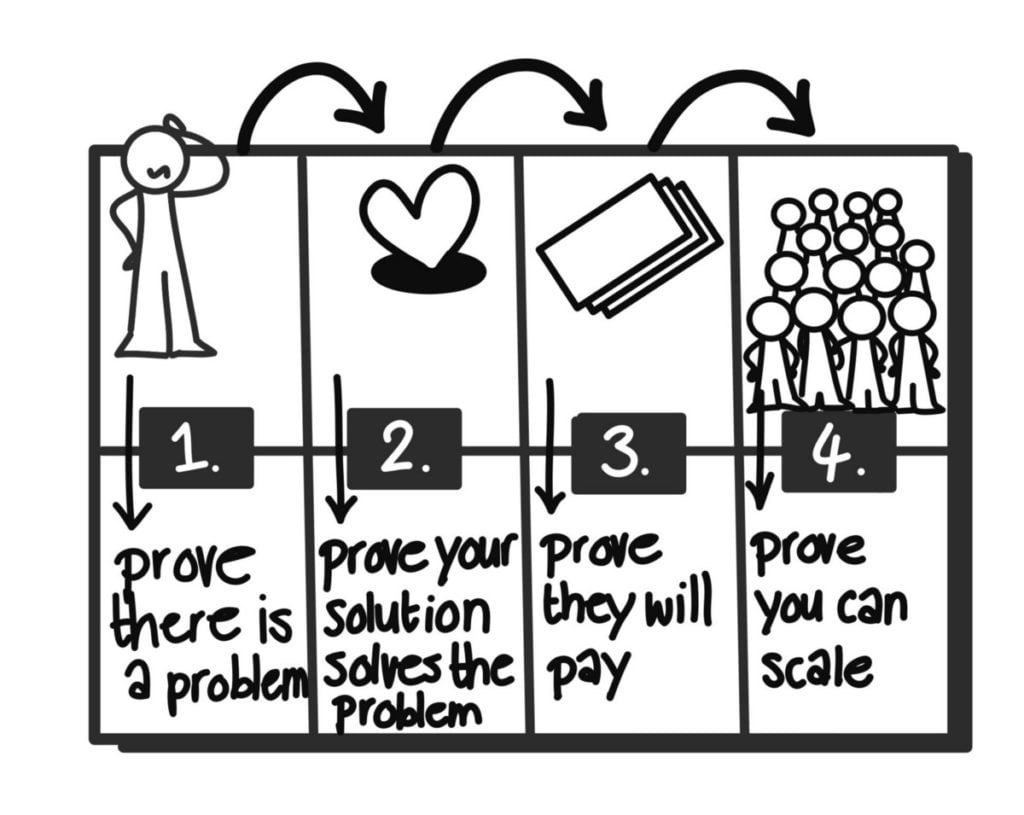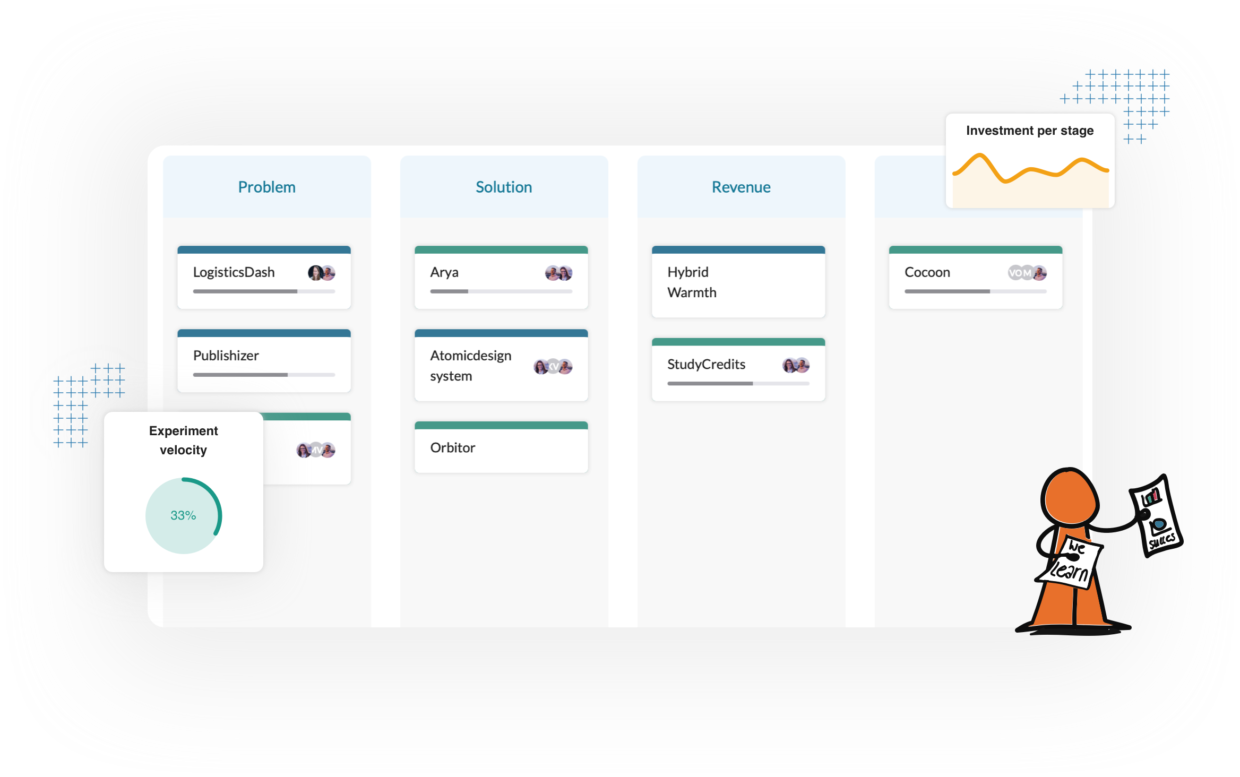Introducing the NEXT Canvas
Another canvas? Yes, but this one is different.
We all know the Business Model Canvas. The Business Model Canvas is a great design tool for creating and renewing business models.
The NEXT Canvas, however, is a product-lifecycle framework created to test ideas and track the progress from idea to a profitable business model.
The NEXT Canvas visualizes the four types of proof an idea needs to become a profitable business model: First, the team needs to prove there is an actual problem to solve. With a clear problem in mind, there is proof needed that a solution can be created to solve that problem. After there is a proven solution, there needs to be proof that customers will pay and finally, the team needs to prove that the business model can scale.

1. Prove there is a problem
The most important part of any business model is the question what problem are you solving for which customer? The first stage of the canvas focusses on finding proof there is an actual problem. It helps you define an early customer segment and zoom in on the problem.
2. Prove your solution solves that problem
After you have defined the problem of your customer, it is important to understand why they would hire your solution. What job are they trying to get done? Only if you know that you can start thinking of a solution.
Of course, most corporate startup teams and even startup founders start with a solution in mind. A vision of a brighter future. It is important however to start at the beginning and define a clear problem. Otherwise, you won’t be able to create the perfect solution to solve that problem.
While working on your solution, you might notice that you are targeting the wrong customers or haven’t really nailed down the problem. It helps to make an iteration back to the Problem stage to revisit your assumptions and proof, to be able to build a product or service your customers want to use.
3. Prove they will pay
After building a solution that your customers want, it is important to prove this by first setting up the right metrics and then by proving your customers are actually willing to pay. There can be no profitable business model, without customers taking out their wallet and transferring money to yours.
At this stage, it regularly happens that it turns out the envisioned perfect customer segment is not willing to pay or not pay enough and you have to make a pivot. Making a pivot means you have to revisit all previous stages. From Problem to Solution and Revenue.
4. Prove you can scale
The hardest stage towards a profitable business model is proving you can scale. You have to be able to grow from an early evangelist customer segment to a much larger and broader segment that can help you scale. This broader customer segment has (slightly) other problems, has another job to be done, might need a different solution and might not want to pay the same or in the same way as your customer segment. You are now juggling all eight puzzle pieces from the canvas, to prove the final stage.
[convertkit form=2601912]
Origin of the NEXT Canvas
Credits where credits are due: The NEXT Canvas is based on the segments of the Business Model Canvas and took further inspiration from the Lean Canvas. We incorporated segments from Ash’s canvas because the Lean Canvas focusses on problem and solution, rather than key partners and key recourses.
We were using the Business Model Canvas and the Lean Canvas with both corporates and startups but were looking for a way to track the progress of the journey from idea to a working business model.
We realized that certain segments are tackled together: you really need to understand the problem of a specific customer segment, to be able to produce a value proposition on which you can base a solution. With this knowledge we reordered segments joining up related ones. Customer on the top row, the product on the bottom. Moving from left to right in way of time and the order in which these become important moving towards a profitable business model.
[convertkit form=2602167]

Esther Gons is the award-winning author of The Corporate Startup & Innovation Accounting. Winner of the 2022 Golden Axiom Business Book Award, 2019 Golden Axiom Business Book Award, and the 2018 Management Book Of The Year Award. She is an expert in Innovation Accounting, Innovation Strategy and Portfolio Management.
